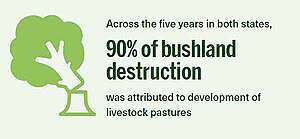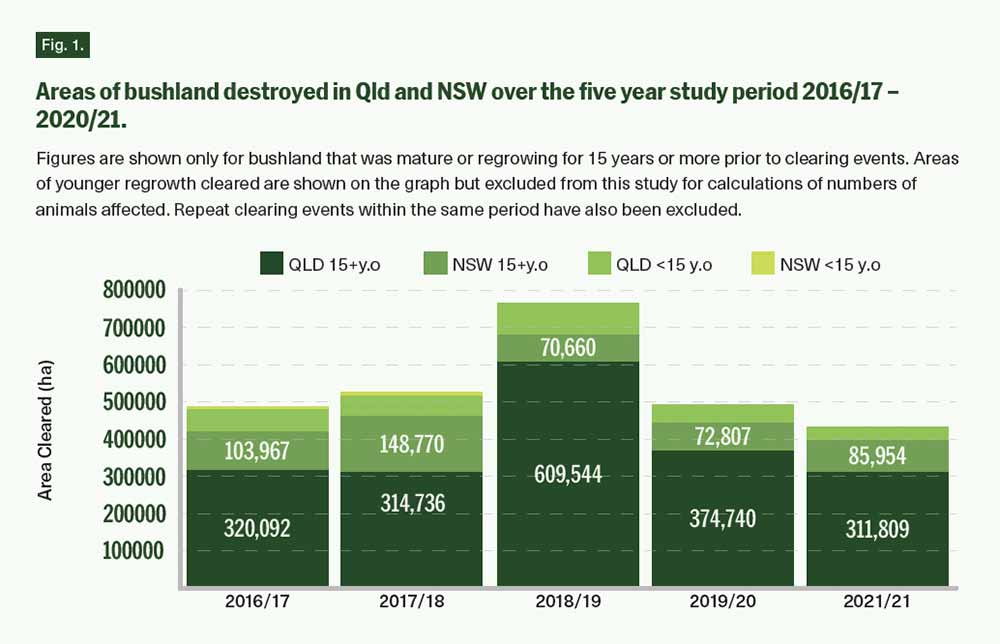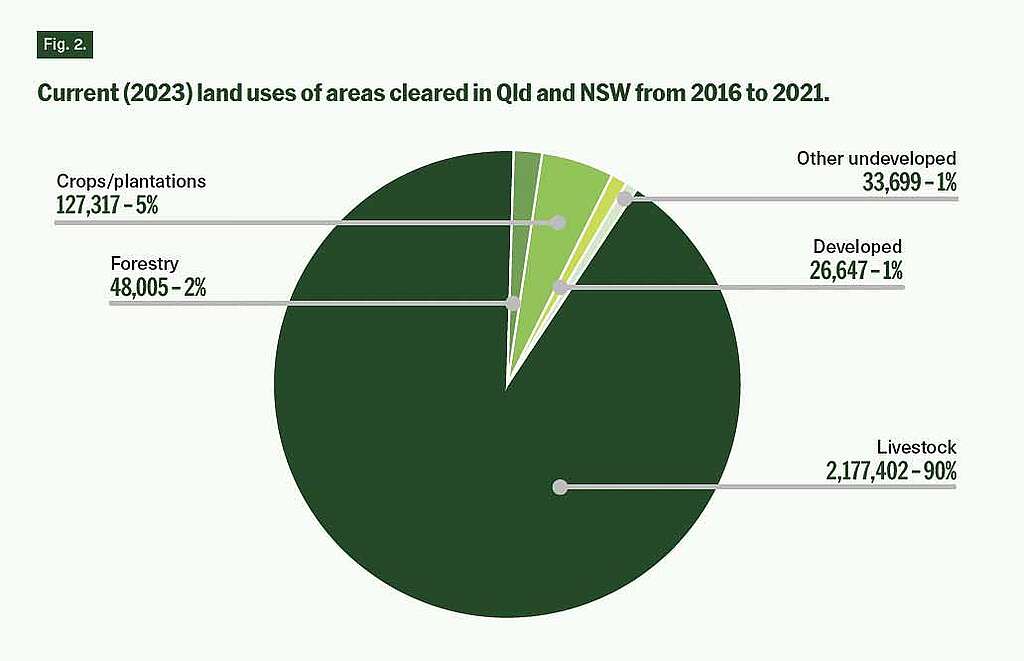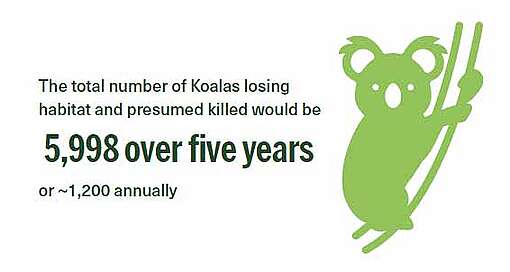Deforestation in Australia Summary

Most deforestation is for beef pasture development and is concentrated in central and south central Queensland and north central NSW in the Brigalow Belt and Mulga Lands bioregions. Mining, infrastructure, and urban development combined account for only 1%.

However, unlike in rural areas, the harm to animals is ongoing particularly in urban and peri-urban environments where past clearing has resulted in native bushland fragments embedded in a landscape with multiple hazards for wildlife. Animals in fragmented landscapes face inadequate shelter, nesting and food resources, exposure to the elements causing dehydration and starvation, as well as increased human wildlife conflict, domestic cat and dog attacks, collisions with powerlines, structures or vehicles on busy roads and stress-induced diseases.

Deforestation in Qld and NSW has resulted in an average of 100 million animals within the clearing footprint. This includes 1.9 to 4.5 million mammals, 7.4 to 9.3 million birds and over 96 million reptiles of all sizes being injured, killed, or displaced every year on average.
This includes approximately 1,200 Koalas a year on average. Koalas were listed as endangered in 2022 after suffering a rapid decline in Qld and NSW in recent decades due to deforestation, habitat fragmentation and the ongoing death and injury that results from fragmentation particularly in urban and peri-urban environments.

In Queensland, on average 24,000 native animals every year are recorded by RSPCA Qld as being rescued or admitted into care, including over 500 koalas. Most admissions fall in the densely populated southeast of the state where wildlife hospitals are concentrated, but which is no longer where most deforestation happens. Numbers injured or killed directly due to deforestation in southeast Queensland are small. The bulk of rescues are the legacy of past deforestation resulting in fragmentation of native bushland in the urban and peri-urban environment.
Little has improved for wild animals since our last report on this crisis in 2017. Despite some reforms to the Vegetation Management Act in Queensland in 2018, laws and policies in both states have not greatly changed and still allow very large areas of bushland habitat for wildlife to be destroyed every year, likely harming, injuring, and killing millions of native animals every year.
Report authors present their findings
Deforestation Legislative changes required
Reducing the toll of suffering and death that results from habitat destruction and fragmentation requires major changes in policy:
- To prohibit or prevent most bushland habitat destruction, especially in areas that remain largely unfragmented;
- To support research to better quantify and understand the impacts of deforestation on forest dependent wildlife, including directly and indirectly impacted individuals;
- To mitigate welfare impacts of any bushland destruction that is allowed through pre-clearing surveys and rehoming of displaced animals;
- To ensure destroyed habitat areas are replaced or offset by restored habitat of the same type and quality;
- To take steps in already developed areas to reduce the ongoing hazards to wildlife from human activities by, for example, establishing wildlife corridors between fragmented areas of previously intact habitat, wildlife bridges over roadways, and stronger controls over human activities within wild habitats;
- To enhance public education about the impacts of deforestation on native animal welfare; and
- To support collaborations between veterinarians, wildlife rescue and conservation organisations, focussing on areas with heavy current deforestation rates or high potential future deforestation risk.


